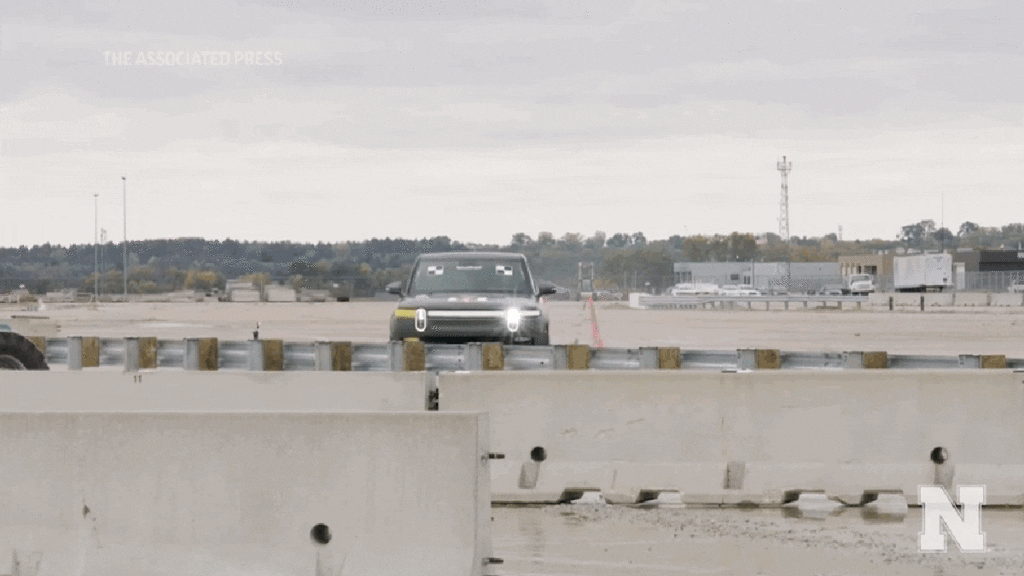Guardrails Aren't Designed To Work On Giant EVs: Study

EVs are really heavy, and neither America’s drivers, nor the vital infrastructure they drive on, are ready for the chaos those big cars will bring. Experts are now especially worried the nation’s guardrails won’t hold up to the weight of EVs in a crash.
We’re Driving the 2024 Honda Prologue, What Do You Want to Know?
Crash tests done by the University of Nebraska at the school’s Midwest Roadside Safety Facility used the same type of guardrail used on highways and freeways across the country, AP News reports. When faced with a weighty EV, such as a Rivian R1T, the guardrails were obliterated in the test:
It came as little surprise when the nearly 4-ton 2022 Rivian R1T tore through the metal guardrail and hardly slowed until hitting a concrete barrier yards away on the other side.
“We knew it was going to be an extremely demanding test of the roadside safety system,” said Cody Stolle with the university’s Midwest Roadside Safety Facility. “The system was not made to handle vehicles greater than 5,000 pounds.”
Test crashes suggest guardrails no match for heavy electric vehicles
The testing comes amid increasing concern about the weight of EVs from transportation officials. While it would seem that EVs have great protection for its occupants — the university noted that the Rivian had almost no damage to its interior after its collision with the concrete barrier — the concern is for the people in the other car. Even after hitting another car, guardrails and concrete barriers are supposed to be the last line of defense as Executive Director of the nonprofit Center for Auto Safety Michael Brooks described to AP:
“Guardrails are kind of a safety feature of last resort,” Brooks said. “I think what you’re seeing here is the real concern with EVs — their weight. There are a lot of new vehicles in this larger-size range coming out in that 7,000-pound range. And that’s a concern.”
Even a Tesla driven through a guardrail in a test done by the Army Corps of Engineers went right under it. This concern for overweight cars is nothing new though. In the ’90s, concern over guardrails and bigger pickups and SUVs became a concern, but with the weight of EVs now becoming a concern, guardrails, along with the rest of our infrastructure, is going to have to bulk up to handle it. “So far, we don’t see good vehicle to guardrail compatibility with electric vehicles,” Code Stolle told AP.
The guardrails we do have are often already insufficient to stop a regular car from crashing, as the critical piece of safety infrastructure is often left to degrade or installed completely incorrectly in the first place.



